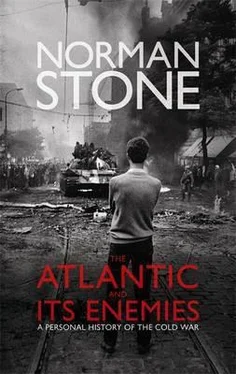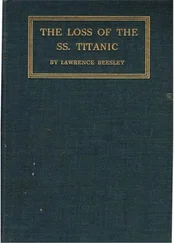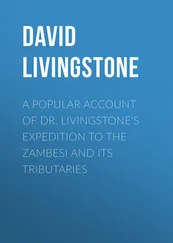These went in tandem with the SALT. The Americans had proposed these in 1964, but the USSR showed serious interest only after Nixon became President in 1969, obviously with a programme of anti-Communism; by now they were greatly worried about China, and in November 1969 the negotiations began for two agreements — an ABM treaty limiting anti-ballistic missiles and a SALT treaty limiting offensive nuclear weaponry. The Soviets were overtaking the Americans in offensive weapons and their interest lay in limiting the Americans’ superior defensive capacity (ABMs), which reduced the effectiveness of their ICBMs. With the US, the interest was the converse, since by 1972 the USSR had over 1,500 missiles to the United States’ 1,054, and, with a first strike, could incapacitate the silos and completely destroy any nuclear balance between the two sides. In May 1972, with Nixon’s visit to Moscow, the ABM and SALT I treaties were signed. There were to be two ABM bases only, with 100 launchers each, one to defend the capital (the ‘Galosh’ system around Moscow, maybe maintained against China) and one to contain the ICBMs. In fact the ABMs of the era were not effective, because their first explosion would block the Americans’ own radar, and the treaty further stipulated that defensive weapons in space, with the use of lasers (where the Americans had a great advantage), would be banned. This greatly assisted the Soviets, the more so as, not subject to democratic controls, they could proceed anyway with secret tests.
There was a further problem, more important later on, in that the disposal of weaponry might include stuff that was obsolete and was anyway due for the junkyard (a ruse used by the Americans when they solemnly withdrew Jupiter missiles from Turkey in the outcome of the Cuban crisis). Besides, what was to happen with inspection, to make sure that the agreements were being kept? This invited trouble, especially on the Soviet side, where there was a mania for secrecy that even divided the Soviet negotiating team: their military refused to divulge information to the civilians, and would only do so to the US military. They now refused any inspection rights, such that satellites would have to be used, and these could not spot concealed weapons on land. In Washington these treaties, whatever their defects, were desired because they led to ‘stability’, then a much prized commodity. The SALT I treaty was a provisional agreement for five years, to keep things at the then level, and affected intercontinental ballistic missiles with a range of over 5,500 kilometres and submarine-based missiles. Bombers, in which the Americans had a considerable advantage, were not affected. The treaty allowed the USSR 1,620 ICBMs and 950 submarine-launched ballistic missiles, and the USA 1,054 and 710 respectively. But it was quite limited — MIRVs (multiple independently targeted re-entry vehicles) were unmentioned, and so were Cruise missiles, which the Americans put into service the following year, weapons with a precision that altered nuclear warfare. The Soviets continued to have the more powerful warheads (one megaton or more, whereas the Americans had a few hundred kilotons) but there was a mathematical formula for the effect of an explosion, which varied according to the negative cube of distance but only according to the square of the power. Qualitative, not quantitative, matters then began to count.
But the value of the treaties was essentially political. It was translated into a high-sounding document about peaceful coexistence and mutual respect, which amounted to a declaration that the USA recognized the USSR as a legitimate and equal partner, and not as a bandit state. The same Moscow ‘summit’ not only agreed the establishment of the CSCE, but also a conference on MBFR (Mutual and Balanced Force Reductions on the conventional-weaponry side). There was even a commercial counterpart, a commission assembling for the first time in Moscow, with an agreement as to the sale of American grain, and in 1975, following an agreement on space, two manned spacecraft solemnly met up. The grain trade opened the way for bank credit and sales of factories or technology, and in the 1970s the Eastern bloc developed quite quickly because of Western credits (though, much to the fury of the Soviets, the USSR was denied most-favoured-nation status by the Jackson Amendment, which made this dependent upon free emigration of Jews: the effect was to multiply the administrative side, customs and insurance, of US-Soviet commercial exchanges). The apogee of this period was reached with Brezhnev’s journey to the USA, on 22 June 1973, when another high-sounding declaration was made, at Soviet insistence, that there would be co-operation to ensure that the two sides would collaborate if there were any danger of a nuclear war. Some Europeans saw this as a step towards US-Soviet condominium.
When Kissinger went to Moscow in September 1972 he laid out the programme — Helsinki on European security (i.e. borders, etc.) in November, Vienna on reciprocal conventional disarmament (MBFR) the following January. The Helsinki negotiations led to a conference of foreign ministers in July 1973, and to the CSCE in July 1975, also at Helsinki. There were of course various hidden concerns on both sides, and since Congress at the time was very close to desiring absolute withdrawal from Vietnam (Senator Mansfeld’s amendment to that effect was rejected only by two votes in 1973), the Americans were operating under considerable pressure from public opinion — perhaps the worst side-effect of Vietnam being its effects on that. At any rate, the attempt to appeal to Moscow did lead to just the attempt at a huge conference that the Soviet side had been wanting since 1954. This also set up a machinery for détente, with bureaucracies on both sides that came, increasingly, to adopt a mutual understanding which meant, in 1990, that there was no real revolution against Communism: the intelligent Communists sacrificed the stupid ones, and remade their own careers very profitably, contacts intact.
The meeting of foreign ministers that initiated the CSCE in Europe assembled in Helsinki on 3 July 1973 (the experts met in Geneva). There were three great topics to be discussed — ‘baskets’, as they were called — the third being in effect human rights, i.e. free circulation of ideas and people, the other two concerning politics and economics. In April 1974 the West made an essential concession, official recognition of the borders of 1945, and the Americans were apparently happy enough to dispose of subjects that were uncomfortable for the Soviets, because they were proceeding with the beginnings of SALT II. The Europeans preferred to let the negotiations last, over the ‘third basket’ (at French insistence), and in any case the Americans had to bear in mind their own eastern European constituency, at times incandescent. Nixon’s successor, Gerald Ford, suddenly took up the ‘third basket’, no doubt as compensation for what had happened over the ‘first’, political one. In the event, differences between the USA, France and Germany, each of which had its own emphasis, were resolved, the French having pushed the ‘third basket’ because they wanted to give satellite governments a lever to prise open the ‘Iron Curtain’ as and when they wanted to, and the Germans, less concerned with this, concerned to avoid having borders defined as ‘intangible’ as distinct from ‘inviolable’. At the turn of July/August 1975 thirty-three heads of state (Europeans, with the USA, Canada, the USSR) signed the ‘Final Act’ of the CSCE — recognition of borders, certain precautionary measures in military affairs, promotion of trade, free circulation of people and ideas. It was a considerable success for the USSR, which had wanted reognition of borders since Potsdam, and Brezhnev told the Politburo that it had needed ‘thirty years of colossal efforts’ to reach that point. Besides, there had been a Soviet condition as regards free circulation of people and ideas, that this would have to reflect ‘national legislation’. The Soviets had wanted to establish a permanent ‘organ’ for the CSCE, which of course might have established them as part of a security structure, as distinct from NATO, but the West managed to substitute, simply, permanent arrangements for conferences (to which Brezhnev proposed, in 1977, various additions as regards ecology, energy, transport). The CSCE had been part of a strategy to draw western Europe towards Moscow.
Читать дальше












![Edward Ellis - Adrift on the Pacific - A Boys [sic] Story of the Sea and its Perils](/books/753342/edward-ellis-adrift-on-the-pacific-a-boys-sic-s-thumb.webp)